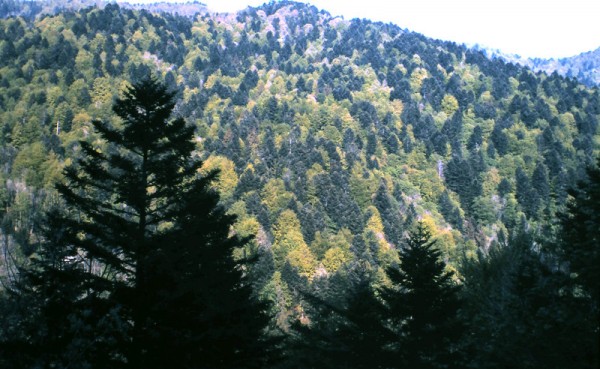By Ana Verayo, | February 07, 2016

Difference in surface properties between dark coniferous and light broadleaved trees in Alsace (France)
Forests are nature's way of maintaining the planet's climate, becoming one of the planet's natural carbon sinkholes, that can absorb excess carbon dioxide to prevent global warming. However, a new study reveals how planting the wrong kind of trees can even potentially make climate change worse.
Like Us on Facebook
Scientists have discovered that European forests are increasing significantly for the past 250 years, shifting from oaks and birch trees to darker colored conifers, which can potentially have a negative effect on the planet.
In this new study, researchers investigated how forests that are undergoing species conversion cannot successfully carry out the usual cooling mechanisms on the planet but can even dangerously cause rising surface temperatures by 0.12 degrees Celsius or 0.2 degrees Fahrenheit, absorbing and retaining more heat in the process.
According to a statement from the Max Planck Institute for Meteorology in Germany, afforestation and forest management are crucial strategies for mitigating climate change that are included in the Paris agreement during the United Nations Framework Convention on Climate Change. They are generally expected to slow down the effects of global warming by removing carbon dioxide from the atmosphere.
However, in this new study, even if there is a significant increase in forest areas due to widespread production and management, forests in Europe failed to completely remove carbon dioxide from the planet's atmosphere.
According to lead author of the study, Kim Naudts of the Max Planck Institute, current forest management is not that effective in contributing to the mitigation of climate change, at least not for Europe.
For this new study, researchers carried out a thorough analysis of a forest reconstruction based on 250 years of management history within Europe's canopy, and discovered that almost 85 percent of the trees were monitored by humans than the pre-industrial era where forests used to be wild.
Beginning 1850 towards present day, foresters are now planting faster growing tree species which are commercially viable such as Scots pine and Norway spruce, that possess darker leaves leading to the absorption of more solar energy as opposed to deciduous trees.
This drastic shift in tree species composition in forests yielded an increase in more wood production however, they also lose absorbing 3.1 billion tons of carbon, compared to the trees back in 1750.
This new study is published in the journal Science.
-
Use of Coronavirus Pandemic Drones Raises Privacy Concerns: Drones Spread Fear, Local Officials Say

-
Coronavirus Hampers The Delivery Of Lockheed Martin F-35 Stealth Fighters For 2020

-
Instagram Speeds Up Plans to Add Account Memorialization Feature Due to COVID-19 Deaths

-
NASA: Perseverance Plans to Bring 'Mars Rock' to Earth in 2031

-
600 Dead And 3,000 In The Hospital as Iranians Believed Drinking High-Concentrations of Alcohol Can Cure The Coronavirus

-
600 Dead And 3,000 In The Hospital as Iranians Believed Drinking High-Concentrations of Alcohol Can Cure The Coronavirus

-
COVID-19: Doctors, Nurses Use Virtual Reality to Learn New Skills in Treating Coronavirus Patients







